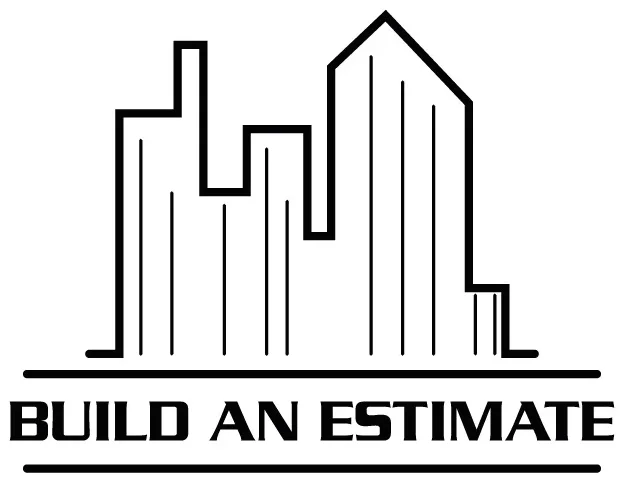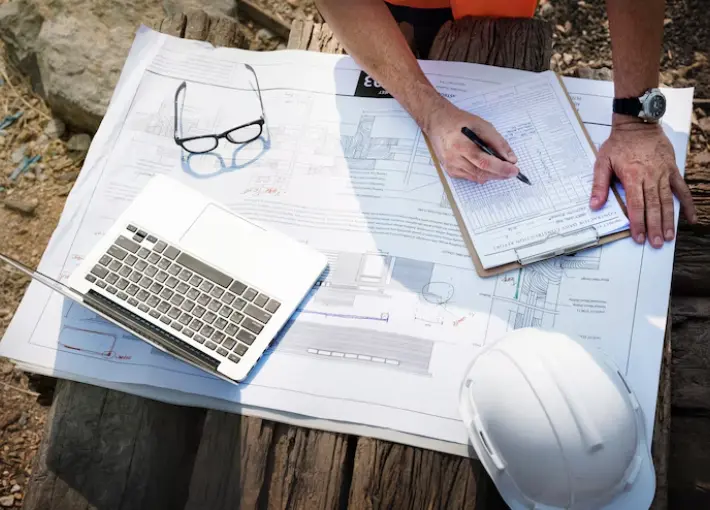- HOME
- SERVICES
- OUR TRADES
- SAMPLES
- Build An Estimate – Accurate Cost Estimating
- CONTACT
- Home
- Services
- Our Trades
- Samples
- Pricing
- Blog
- About Us
- Contact
- HOME
- SERVICES
- OUR TRADES
- SAMPLES
- Build An Estimate – Accurate Cost Estimating
- CONTACT
- Home
- Services
- Our Trades
- Samples
- Pricing
- Blog
- About Us
- Contact

Mastering the Art of Industrial Estimating: How Professional Estimating Services Can Optimize Your Project’s Success
August 4, 2023
Benefits of Using Professional Construction Estimating Services
August 8, 2023Estimates Unveiled: The Key Components and Best Practices in Building Construction
Table of Content:
- The importance of accurate estimates in construction projects
- Key components of a building construction estimate
- Best practices for creating building construction estimates
- Factors to consider when estimating construction costs
- Tools and software for building construction estimates
- Common challenges in building construction estimating and how to overcome them
- Case studies showcasing successful building construction estimates
- The role of estimation in project management and project success
- Conclusion
Are you interested in the intricate world of building construction? Well, you’re in luck! In this article, we will delve into the fascinating realm of estimates in building construction, uncovering the key components and best practices. Whether you’re a seasoned contractor, an aspiring architect, or simply someone with a curious mind, understanding how estimates are formulated is crucial to ensuring the success of any construction project. From the initial planning stages to the final cost analysis, we will explore the essential elements that contribute to an accurate estimate.
Furthermore, we will shed light on the best practices that professionals in the industry employ to ensure efficiency, accuracy, and ultimately, client satisfaction. So, if you’re ready to unravel the mysteries behind estimates in building construction, let’s dive right in!
The importance of accurate estimates in construction projects
Accurate estimates play a crucial role in the success of building construction projects. They provide a foundation for planning, budgeting, and resource allocation. Without accurate estimates, project timelines can be disrupted, costs can spiral out of control, and client satisfaction can be compromised. An accurate estimate helps stakeholders make informed decisions, minimizes the risk of unforeseen expenses, and ensures the project is completed within the allocated budget and timeline.
One key reason why accurate estimates are important is that they enable effective resource management. By accurately estimating the materials, labor, and equipment required for a project, construction teams can ensure the availability of resources at the right time and in the right quantities. This helps prevent delays and minimizes the risk of cost overruns.
Another crucial aspect of accurate estimates is that they contribute to client satisfaction. When clients receive a detailed and accurate estimate, they have a clear understanding of what to expect in terms of costs and timelines. This transparency builds trust and helps manage client expectations throughout the construction process. It also allows clients to make informed decisions regarding any potential changes or modifications to the project scope.
In summary, accurate estimates are essential for effective project planning, resource management, cost control, and client satisfaction. Now that we understand the importance of accurate estimates, let’s explore the key components that make up a building construction estimate.
Key components of a building construction estimate
A building construction estimate is a comprehensive document that outlines the projected costs of a construction project. It consists of various components that are essential for accurately estimating the overall cost of the project. Here are the key components of a building construction estimate:
1. **Materials**: The cost of materials is one of the major components of a construction estimate. This includes everything from bricks, cement, and steel to plumbing fixtures, electrical wiring, and paint. Estimators need to consider the quantity and quality of materials required for the project and factor in their current market prices.
2. **Labor**: The cost of labor is another significant component of a construction estimate. This includes the wages of skilled and unskilled workers, as well as any subcontractors or specialist tradespeople that may be required. Estimators need to account for the number of labor hours needed for each task and calculate the labor costs accordingly.
3. **Equipment**: Construction projects often require the use of various types of equipment, such as cranes, excavators, and concrete mixers. The cost of equipment rental or ownership, including fuel and maintenance, should be included in the estimate. Estimators need to consider the duration of equipment use and factor in the associated costs.
4. **Overhead expenses**: Overhead expenses include indirect costs that are not directly attributable to a specific task or item, such as project management, insurance, permits, and utilities. These costs are essential for the smooth functioning of the project and should be included in the estimate.
5. **Contingency**: A contingency allowance is included in the estimate to account for unforeseen circumstances or changes in the project scope. This provides a buffer for any unexpected expenses that may arise during construction.
By considering these key components, estimators can generate a comprehensive and accurate estimate that covers all the necessary costs of a building construction project. However, creating an accurate estimate requires following certain best practices, which we will explore in the next section.
Best practices for creating building construction estimates
Creating accurate construction estimates requires a systematic approach and adherence to best practices. By following these best practices, professionals in the industry can ensure that their estimates are reliable, consistent, and reflective of the true costs of a project. Here are some best practices for creating building construction estimates:
1. **Thoroughly review project plans**: Before starting the estimation process, it is crucial to thoroughly review the project plans and specifications. This helps ensure that all requirements and scope details are understood, allowing for a more accurate estimate.
2. **Break down the project into smaller tasks**: Breaking down the project into smaller tasks allows for a more detailed and accurate estimate. Each task should be analyzed individually, considering the materials, labor, and equipment required. This helps identify potential cost savings and ensures that nothing is overlooked.
3. **Research and update cost data**: Construction costs can vary over time due to factors such as inflation, market fluctuations, and changes in regulations. It is essential to research and update cost data regularly to ensure that estimates reflect current market conditions.
4. **Consult with experts**: In complex construction projects, it is beneficial to consult with experts in specific trades or areas of expertise. Their insights and knowledge can help identify potential challenges, estimate costs more accurately, and optimize project plans.
5. **Use estimation software**: Estimation software can streamline the estimation process, improve accuracy, and save time. These tools allow for easy integration of cost data, automatic calculations, and the generation of detailed reports. Using such software can significantly enhance the efficiency and reliability of estimates.
By following these best practices, construction professionals can create accurate estimates that serve as a reliable foundation for successful project execution. However, it is important to consider various factors that can impact construction costs. Let’s explore these factors in the next section.
Factors to consider when estimating construction costs
Estimating construction costs involves considering various factors that can influence the overall project budget. These factors can vary depending on the type and scale of the construction project. Here are some common factors to consider when estimating construction costs:
1. **Location**: The location of a construction project can impact costs due to variations in labor rates, material availability, transportation costs, and local building codes or regulations. Estimators need to account for these location-specific factors to ensure accurate cost estimates.
2. **Project complexity**: The complexity of a construction project can influence costs. Projects that involve intricate designs, specialized materials, or unique construction techniques often require additional resources and expertise. Estimators need to consider the level of complexity and factor in the associated costs.
3. **Market conditions**: Construction costs can be influenced by market conditions, such as the availability of skilled labor, fluctuations in material prices, and changes in demand. Estimators need to stay updated on market trends and adjust their estimates accordingly.
4. **Seasonal factors**: Seasonal factors, such as weather conditions, can impact construction costs. In regions with extreme weather patterns, construction projects may be limited to specific seasons, which can affect labor availability and productivity. Estimators need to consider these seasonal factors when estimating costs and timelines.
5. **Sustainability requirements**: Green building practices and sustainability requirements can influence construction costs. Projects that aim to achieve specific sustainability certifications may require additional materials, technologies, or design features, which can impact the overall cost estimate.
By considering these factors, estimators can create more accurate cost estimates that reflect the unique characteristics of each construction project. However, estimating construction costs can be a complex task, and professionals often rely on specialized tools and software to streamline the process. Let’s explore some of these tools and software in the next section.
Tools and software for building construction estimates
In today’s digital age, there is a wide range of tools and software available to assist construction professionals in estimating costs more effectively. These tools not only streamline the estimation process but also provide access to up-to-date cost data and advanced functionalities. Here are some commonly used tools and software for building construction estimates:
1. **Cost databases**: Cost databases provide estimators with access to comprehensive cost information for various construction items and tasks. These databases are regularly updated to reflect current market conditions, allowing for more accurate cost estimates.
2. **Building information modeling (BIM)**: BIM software enables estimators to create 3D models of the project, which can be used to extract quantities and generate cost estimates. BIM software integrates various project data, such as architectural plans and material specifications, allowing for more accurate and detailed estimates.
3. **Estimation software**: Estimation software, such as ProEst, PlanSwift, and Clear Estimates, automates the estimation process and provides features like cost breakdowns, customizable templates, and reporting capabilities. These tools save time, improve accuracy, and enhance collaboration among project stakeholders.
4. **Takeoff software**: Takeoff software, such as Bluebeam Revu, On-Screen Takeoff, and STACK, digitizes the takeoff process by allowing estimators to measure quantities directly from digital plans. This eliminates the need for manual takeoffs, reduces errors, and speeds up the estimation process.
5. **Project management software**: Project management software, such as Procore, Primavera P6, and Microsoft Project, often includes cost estimation features. These tools enable estimators to integrate cost estimates with project schedules, track expenses, and manage changes more efficiently.
By leveraging these tools and software, construction professionals can streamline the estimation process, improve accuracy, and enhance overall project efficiency. However, estimating construction costs can still present challenges. Let’s explore some common challenges in building construction estimating and how to overcome them.
Common challenges in building construction estimating and how to overcome them
Estimating construction costs can be a challenging task due to the various factors and uncertainties involved. Here are some common challenges in building construction estimating and strategies to overcome them:
1. **Limited information**: Estimators often face challenges when project plans or specifications are incomplete or unclear. To overcome this challenge, it is important to communicate with project stakeholders, request additional information, and seek expert advice to fill in any knowledge gaps.
2. **Uncertain market conditions**: Fluctuating material prices and labor availability can make it difficult to accurately estimate costs. To overcome this challenge, estimators should regularly monitor market trends, stay updated on industry news, and consult with suppliers and sub-contractors for the most accurate cost information.
3. **Scope changes**: Changes in project scope can significantly impact cost estimates. It is important to establish a change management process that clearly defines how scope changes will be addressed and their impact on the estimate. Regular communication with project stakeholders is key to managing scope changes effectively.
4. **Inaccurate historical data**: Estimators often rely on historical cost data for estimating future projects. However, using outdated or inaccurate data can lead to inaccurate estimates. To overcome this challenge, it is important to maintain a database of accurate historical cost information and update it regularly.
5. **Over-optimism or underestimation**: Estimators may sometimes be overly optimistic or underestimate the complexity of a project, which can lead to inaccurate cost estimates. To overcome this challenge, it is important to be realistic and objective when assessing project requirements and potential risks. Consulting with experienced professionals and conducting thorough reviews can help ensure more accurate estimates.
By being aware of these common challenges and implementing strategies to overcome them, construction professionals can improve the accuracy and reliability of their cost estimates. To further illustrate the practical application of accurate estimates, let’s explore some case studies showcasing successful building construction estimates.
Case studies showcasing successful building construction estimates
Case Study 1: High-rise Residential Tower
In this case study, a construction company was tasked with estimating the costs for a high-rise residential tower project. By thoroughly reviewing the project plans and consulting with structural engineers and architects, the estimators were able to accurately estimate the materials, labor, and equipment required for each phase of the project. They also considered factors such as location, market conditions, and sustainability requirements. The comprehensive estimate provided the client with a clear understanding of the costs involved, resulting in successful project planning and execution.
Case Study 2: Commercial Office Building
For a commercial office building project, the construction company used BIM software and cost databases to create a detailed estimate. By leveraging the 3D model, the estimators were able to extract quantities and generate accurate cost estimates for each building component. They also considered factors such as location, project complexity, and market conditions. The detailed estimate helped the client make informed decisions regarding design modifications and allow for effective budgeting and resource allocation.
These case studies highlight the importance of accurate estimates in successful construction projects. Accurate estimates not only provide clients with transparency and confidence but also enable construction professionals to plan and execute projects efficiently. Estimates also play a crucial role in project management. Let’s explore the role of estimation in project management and project success.
The role of estimation in project management and project success
Estimation is a vital component of project management, as it provides the foundation for effective planning, resource allocation, and budget control. Accurate estimates help project managers make informed decisions, set realistic goals, and manage stakeholder expectations. Here are some key ways in which estimation contributes to project management and project success:
1. **Planning**: Estimation helps project managers create realistic project plans by providing accurate cost and resource estimates. This allows for better scheduling, task allocation, and identification of critical milestones. Accurate estimation also helps identify potential risks and allows project managers to develop contingency plans.
2. **Resource allocation**: Accurate estimates enable project managers to allocate resources effectively. By knowing the quantity and duration of tasks, project managers can assign the right resources at the right time, ensuring optimal resource utilization. This helps prevent delays, reduces costs, and improves overall project efficiency.
3. **Budget control**: Estimation plays a crucial role in budget control throughout the project lifecycle. Accurate estimates help project managers monitor and control project costs, identify cost variances, and take corrective actions if necessary. This ensures that the project remains within the allocated budget and minimizes the risk of cost overruns.
4. **Risk management**: Estimation facilitates effective risk management by identifying potential risks and uncertainties. By considering factors such as market conditions, project complexity, and scope changes, project managers can assess and mitigate risks more effectively. Accurate estimates provide a baseline for risk analysis and help project managers develop risk response strategies.
5. **Stakeholder management**: Accurate estimates contribute to effective stakeholder management by providing transparency and managing expectations. When stakeholders have a clear understanding of the project costs and timelines, they can make informed decisions and support the project more effectively. This helps build trust and rapport between the project team and stakeholders, which can be essential for the project’s success.
Conclusion
In conclusion, accurate estimates are essential for the successful execution of building construction projects. By considering the key components of a construction estimate, following best practices, and using specialized tools and software, construction professionals can create more accurate cost estimates that reflect the unique characteristics of each project.
The factors that can impact construction costs are also important to consider when estimating costs. These factors can vary depending on the type and scale of the construction project. By considering these factors, estimators can create more accurate cost estimates that reflect the unique characteristics of each project.
The tools and software available to assist construction professionals in estimating costs are also constantly evolving. By staying up-to-date on the latest tools and software, construction professionals can streamline the estimation process and improve the accuracy of their estimates.
By following the best practices outlined in this article, construction professionals can create accurate estimates that serve as a reliable foundation for successful project execution.
Here are some additional points that could be included in the conclusion:
- The importance of communication and collaboration between the estimator, project manager, and client throughout the estimation process.
- The need to review and update estimates regularly as the project progresses.
- The importance of using a risk management approach to identify and mitigate potential cost overruns.






